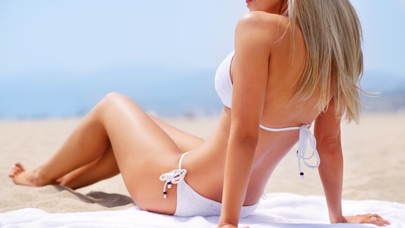




While we’ve discussed the differences between wrinkles and rhytides in the past, there are many more phrases floating around to refer to those pesky lines and creases that crop up on our faces and necks. Whether they’re caused by muscle tension or repeated facial expressions, these wrinkles are totally treatable. However, before we get to the solution, let’s review some of the new names we’re hearing for the same old wrinkles many of us experience as we age.
The following terms are certainly not considered accurate medical terminology, but they do crop up often in media and conversation.
Crow’s feet refer to the creases that fan out from the outer corners of the eyes. Often a result of squinting and intensified by a habit of not wearing sunglasses, the thinner layers of the skin around the eye develop fine lines. For many, squinting can also be natural when laughing, smiling, and crying.
While smoking certainly has a detrimental effect on skin health, smoker’s lines aren’t exclusive to those who smoke. Rather, smoker’s lines refer to the creases that extend outward along the lip line and are linked to puckering. Smoking is certainly a contributing factor to these creases, but the excessive use of straws could also eventually cause wrinkling around the lips.
Unlike some of the other terms listed here, laugh lines can technically refer to any wrinkles or creases that crop up from repeated smiling and laughing. Most commonly, laugh lines appear around the mouth, but this phrase can also refer to creases around the eyes (also known as crow’s feet) or fine lines around the nose for those who happen to wrinkle it when they laugh.
The term “elevens” refers to the two lines that appear vertically between the brows, often aligned with the edges of the bridge of the nose. Also called frown lines because the skin in this area inevitably folds when we frown or are sad, these wrinkles can also be a result of repeated squinting.
Named from the way one might wrinkle and wriggle their nose like a rabbit when they laugh or squint, bunny lines are the wrinkles that form on the sides of the nose and out to the cheeks. These wrinkles are a little less common, but may appear more often in those who also have elevens.
Marionette lines are the deep creases that form on either side of the mouth and extend from the nose or cheeks right down to the jawline. They often develop into deep wrinkles and are often a result of a decline in skin firmness over time. Marionette lines may more commonly be called jowls.
“Turkey neck” is a term that has stuck around for some time, referring to sagginga skin that appears under the chin and along the jawline. While it’s certainly not a flattering phrase, turkey neck is a common occurrence as skin ages, elasticity declines, and gravity takes effect. Loose skin in this area may also result from rapid weight loss and may be counteracted with an energy-based skin tightening treatment plan for those looking for an alternative to cosmetic surgery.
A term that appears to be trending in this growing digital age, “tech neck” refers to wrinkles that appear as horizontal creases along the neck that are thought to be linked to increased time spent staring down at our digital devices—laptops and smartphones tend to be the most common devices linked to tech neck. While our increasing use of technology may seem like a surprising cause of wrinkles, thinner skin along the neck makes this type of wrinkling a more common occurrence.
As mentioned earlier, the lines around the mouth and eyes caused by laughing or smiling commonly fall under the umbrella of laugh lines, but those around the mouth may also be called accordion lines. These wrinkles tend to appear as deeper vertical lip lines beginning near the corners of the mouth and repeating out toward the cheeks. In those with less fat tissue in the cheeks, these lines may appear more pronounced with age.
Cleavage wrinkles appear on the chest between the breasts. More common among those with a larger breast size, cleavage wrinkles—also known as clinkles—can result from sleeping on your side, cumulative sun exposure in this area where skin tends to be thinner and more susceptible to skin damage, and a naturally lower skin hydration level due to less oil production by the skin in this area. Push-up and sports bras can also have an impact if worn regularly.
Whatever name you use, your aesthetic treatment provider can likely help ease your concerns regarding wrinkles with a comprehensive treatment plan that hits all levels of the Skin Health and Beauty Pyramid™, the most widely accepted approach to effective skin care. Treatment begins with a consultation that helps your aesthetics provider learn about your aesthetic goals and skin care needs. Based on your conversation, your provider may then suggest a sun protection product to prevent further sun damage (a major factor in the formation of early wrinkles) alongside quality skin care with proven active ingredients to support healthy skin cell renewal.
For non-surgical solutions, energy-based wrinkle reduction treatments offer an effective method to firm and smoothen by supporting skin’s natural processes. Quick and effective using technology that’s safe for all skin tones, these wrinkle reduction treatments deliver targeted radio frequency (RF) energy deep below the skin’s surface to stimulate skin cell renewal and promote increased collagen and elastin production. In other words, these treatments use heat to help support skin health from the inside out.
Interested in learning more about your non-surgical aesthetic treatment options for fending off wrinkles and loose skin? Contact a trusted and certified treatment provider near you today using the search field below.
Find a certified Venus Treatments provider near you today who specializes in today’s top aesthetic medical solutions.



Search below to find a provider near you and to learn about our non-surgical aesthetic treatments with ARTAS®, NeoGraft®, Venus Bliss™, Venus Versa™, Venus Legacy™, Venus Velocity™, Venus Viva™ MD, Venus Freeze Plus™, and Venus Glow™.
For more information call: +61 416 022 096 // [email protected] // Suite 3.06/ Level 3 20 Rodbourgh Road, Frenchs Forest NSW 2086, Australia
REGULATORY CLEARANCES [ More ]
Venus Versa™ has CE Mark as a multi-application device intended to be used in aesthetic and cosmetic procedures. The SR515 and SR580 applicators have CE Mark for the treatment of benign pigmented epidermal and cutaneous lesions and treatment of benign cutaneous vascular lesions. The HR650/HR650XL and HR690/HR690XL applicators have CE Mark for the removal of unwanted hair and to effect stable long-term or permanent hair reduction for Fitzpatrick skin types I-IV. The AC Dual applicator has CE Mark for the treatment of acne vulgaris. The DiamondPolar™ applicator has CE Mark for non-invasive treatment of moderate to severe facial wrinkles and rhytides on females with Fitzpatrick skin types I-IV. The OctiPolar™ applicator on the Venus Versa™ system has CE Mark for temporary body contouring via skin tightening, circumferential reduction, and cellulite reduction. The NanoFractional RF™ (Viva) applicator has CE Mark for dermatological procedures requiring ablation and resurfacing of the skin.
NeoGraft® 2.0 has CE Mark and TGA with indication for use in suction-assisted follicular extraction and re-implantation for males and females.
The ARTAS iX™ from Restoration Robotics® is indicated for harvesting hair follicles from the scalp in men diagnosed with androgenic alopecia (male pattern hair loss) who have black or brown straight hair. The ARTAS iX™ from Restoration Robotics® is intended to assist physicians in identifying and extracting hair follicular units from the scalp during hair transplantation; creating recipient sites; and implanting harvested hair follicles.
Venus Epileve™ has CE Mark for hair removal, permanent hair reduction (defined as the long-term stable reduction in the number of hairs re-growing when measured at 6, 9 and 12 months after the completion of a treatment regimen), and the treatment of pseudofolliculitis barbae for all Fitzpatrick skin types. Venus Epileve™ is also CE-Marked for hirsutism.
Venus Legacy™ has CE Mark for the temporary increase of skin tightening, circumferential reduction, cellulite reduction, and wrinkle reduction.
Venus Velocity™ has CE Mark for hair removal, permanent hair reduction (defined as the long-term stable reduction in the number of hairs re-growing when measured at 6, 9 and 12 months after the completion of a treatment regimen), and the treatment of pseudofolliculitis barbae for all Fitzpatrick skin types.
Venus Viva™ has CE Mark for the use in dermatologic and general surgical procedures requiring ablation and resurfacing of the skin, and the treatment of moderate to severe facial wrinkles and rhytides in Fitzpatrick skin types I-IV with the DiamondPolar™ applicator.
Venus Freeze Plus™ has CE Mark for treatment of moderate to severe facial wrinkles and rhytides using the DiamondPolar™ applicator, and CE Mark for the treatment of cellulite reduction, increase of skin tightening, and temporary circumferential reduction on the OctiPolar™ applicator.
Venus Freeze™ has CE Mark for treatment of moderate to severe facial wrinkles and rhytides using the DiamondPolar™ applicator, and CE Mark for the treatment of cellulite reduction, increase of skin tightening, and temporary circumferential reduction on the OctiPolar™ applicator.
Venus Glow™ provides a dermal rejuvenation treatment that works to open up and deep-clean pores. Venus Concept is the exclusive distributor for Venus Glow™.
Copyright © 2025 Venus Concept. All rights reserved.
You are entering our website. For other country/regions and language options, please click the button below.
Click HereAre you a physician or aesthetician? Please visit our medical and aesthetic professional website to learn more.
Click Here